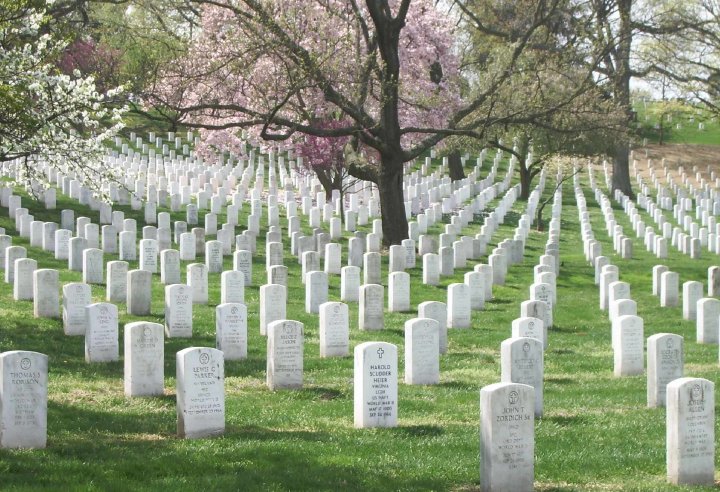
Most Hallowed Ground
April 16, 2010
"Taps" is played here two dozen times a day, the notes as haunting and lonely as death, this hallowed ground's abiding presence.
In Arlington National Cemetery, where the nation buries many of its war dead, horse-drawn caissons bear flag-draped coffins across a sea of white, military-issue tombstones. Buried here are those who served in Vietnam, Korea, the two World Wars, the Civil War, the American Revolution.
And now, Iraq and Afghanistan.
Young warriors barely past voting age and old retired vets lie next to each other, grave locations dictated more by logistics than military accomplishment.
"There is no rank structure in death," says cemetery spokesman Tom Findtner, a line that sounds well-used.
Arlington National Cemetery was established during the American Civil War on the grounds of Arlington House, formerly the estate of the family of Confederate general Robert E. Lee's wife Mary Anna (Custis) Lee, a descendant of Martha Washington.
More than 285,000 people are interred in the cemetery's 624 acres, and 25 to 27 are added each day as the World War II veterans move through their 80s. Also buried here are former presidents, slaves, astronauts and members of Congress. During the height of the Vietnam War, as many as 40 funerals took place daily.
Funerals occur on weekdays, but after the Sept. 11, 2001, terrorist attacks they were conducted into the evening and on Saturdays to accommodate victims from the plane crash into the nearby Pentagon.
Burial space is tight, and the cemetery plans to add 43 acres from adjacent military property. Lack of space has brought restrictions on who is eligible for in-ground burials. Relatives are interred in the same plot as their military personnel, where possible, and the cemetery encourages use of the columbium, a facility for cremated remains.
Some of the dead, like Capt. Russell B. Rippetoe, 27, an Army Ranger killed when a car bomb exploded at an Iraqi checkpoint, died in military action and came home to the honors accorded a war hero. He was the first U.S. military casualty buried here from the Iraq war.
As befits a place that has been burying heroes since 1864 - pre-Civil War dead were moved here after 1900 - the rituals are many and precise. One, the changing of the guard at the Tomb of the Unknowns, is a major attraction for the 4.5 million tourists who stream through cemetery gates each year.
It was President Kennedy's televised funeral that gave many Americans their first sight of the horse-drawn caisson, an open-air carriage that carried Kennedy's coffin here from Washington, just across the Potomac River.
A caisson carrying a fallen soldier is pulled by a team of six matched grays and escorted by a seventh ridden horse as a military band played "Battle Hymn of the Republic" and later, "America the Beautiful." Seven soldiers fired rifle volleys - the number of shots depends on the deceased's rank. Then came "Taps" - played for all funerals - as a lone bugler stepped apart from the band and blew his solitary notes.
The U.S. flag from the casket is folded with military precision. A member of unit presents it to a family member, then kneels to recite, in a choked voice, the traditional words intended as solace for those left behind:
"On behalf of the president of the United States and a grateful nation, I present you with this flag as a token of the honor and faithful service of your loved one."
The family receives a formal condolence card from a member of the Arlington Ladies, a women's group that sends someone to every funeral. That tradition began in 1972 after an Army general happened on a burial with no mourners.
As one funeral ends. another begins. On a road nearby was parked a yellow back hoe, its driver waiting for the mourners to leave so the more practical tasks of burying the dead could go forward.
Here in Arlington, the reminders of war's cost in young lives are inescapable.
Here among the green grass and rows of white and gray headstones is a silent reminder of the cost of Freedom.
Here is the hope that the American people do not forget.
Here they do not.
